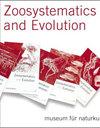The Caucasus is neither a cradle nor a museum of diversity of the land snail genus Helix (Gastropoda, Stylommatophora, Helicidae), while Crimea is home to an ancient lineage
IF 0.9
2区 生物学
Q2 ZOOLOGY
引用次数: 0
Abstract
The Caucasus and the adjacent Pontic Mountains in north-eastern Anatolia are home to numerous endemic land snail genera and species. The diversity of the region is the result of both intra-regional speciation and the persistence of relict lineages. The same seemed to be true for the genus Helix, which has been present in the Greater Caucasus since the Miocene. In the Caucasus region, there are three Helix species. Helix buchii (Pontic Mountains and Georgia) and Helix albescens (southern Ukraine to northern Lesser Caucasus) are both separated by deep splits from the major Helix clades in the mitochondrial phylogeny. In contrast, Helix lucorum belongs to the Anatolian radiation of Helix. At least part of its intraspecific diversification may have occurred in north-eastern Anatolia and the adjacent parts of the Caucasus. Here, we report new evidence suggesting that the Caucasus and the Pontus regions were less important as a refugium of ancient Helix lineages or as a diversification centre than previously hypothesised. Helix lucorum probably diversified more westwards, while H. buchii is a less ancient lineage than previously thought. Helix albescens had its long-term refugium on the Crimean Peninsula in southern Ukraine, not in the Caucasus. The Caucasus is close to the eastern limit of the distribution range of the genus and, although the fossil record shows that Helix was present there as early as the Miocene, the current diversity of the genus there is the result of much later colonisation.高加索地区既不是螺旋蜗牛属(腹足纲,螺蛳科,螺蛳科)多样性的摇篮,也不是博物馆,而克里米亚是一个古老血统的家园
高加索和邻近的安纳托利亚东北部的本蒂克山脉是许多地方性陆地蜗牛属和物种的家园。该地区的多样性是区域内物种形成和遗留谱系持续存在的结果。螺旋属似乎也是如此,它自中新世以来就出现在大高加索地区。在高加索地区,有三种螺旋。Helix buchii (Pontic Mountains和Georgia)和Helix albescens(乌克兰南部到小高加索北部)在线粒体系统发育中都与主要的Helix分支有很深的分离。相比之下,Helix lucorum属于Helix的安纳托利亚辐射。其种内多样化的至少一部分可能发生在安纳托利亚东北部和高加索的邻近地区。在这里,我们报告了新的证据,表明高加索和本都地区作为古代螺旋血统的避难所或作为多样化中心的重要性不如以前假设的那么大。双螺旋lucorum可能更向西多样化,而H. buchii是一个比之前认为的更古老的谱系。黑螺旋体长期在乌克兰南部的克里米亚半岛避难,而不是在高加索地区。高加索地区接近该属分布范围的东部边界,尽管化石记录显示Helix早在中新世就出现在那里,但该属目前的多样性是更晚的殖民化的结果。
本文章由计算机程序翻译,如有差异,请以英文原文为准。
求助全文
约1分钟内获得全文
求助全文
来源期刊

Zoosystematics and Evolution
ZOOLOGY-
CiteScore
3.50
自引率
5.00%
发文量
34
审稿时长
16 weeks
期刊介绍:
Zoosystematics and Evolution, formerly Mitteilungen aus dem Museum für Naturkunde in Berlin, is an international, open access, peer-reviewed life science journal devoted to whole-organism biology. It publishes original research and review articles in the field of Metazoan taxonomy, biosystematics, evolution, morphology, development and biogeography at all taxonomic levels. The journal''s scope encompasses primary information from collection-related research, taxonomic descriptions and discoveries, revisions, annotated type catalogues, aspects of the history of science, and contributions on new methods and principles of systematics. Articles whose main topic is ecology, functional anatomy, physiology, or ethology are only acceptable when of systematic or evolutionary relevance and perspective.
 求助内容:
求助内容: 应助结果提醒方式:
应助结果提醒方式:


